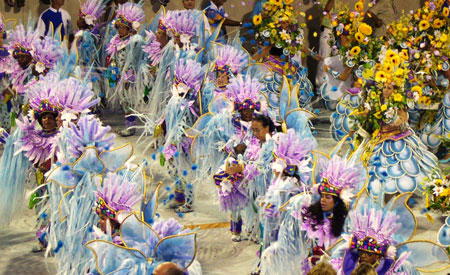Photographing public events can be a challenging business - particularly in a modern world filled with political correctness and suspicion, and fuelled by money. There are no general or easy answer to any of the most common questions. The prevailing situation and circumstances always make a difference, so a photographer is obliged to prepare properly and live on his or her wits and experience. However there are a number of guidelines to which a wise photographer might consider adhering.
- Do whatever you intend to do in an open and honest manner. Do not try to conceal yourself or sneak images of something or somebody without their knowledge. Work openly and with confidence, asking permission where necessary.
-
Make provision to identify yourself and explain your actions in an open and convenient manner. This can be addressed by offering a business card, or personal card, which immediately identifies you and provides contact information. Another approach is to carry membership cards for any photographic clubs or organizations, and the relevant telephone numbers, so immediate checks can be made in difficult circumstances. Some photographers even carry examples of their own work, copies of a book they have written, or newspaper cuttings about themselves. Once people know what you are doing they are less inclined to become suspicious of your actions.

Image by kind permission of Raquel Teixeira - If challenged, be prepared to give a calm, polite and respectful explanation to anyone who enquires about your activities. Courtesy, openness and self-confidence go a long way. Remain patient and, where appropriate, ask for advice or assistance. Security personnel, police, guards and other people in similar roles often appreciate being asked for support and the relationship between the photographer and the official consequently changes in a constructive manner.
- Be aware that a photographer is perceived as a threat by some people. Every individual may have his or her own basis for suspicion of a stranger with a camera but, at least in some cases, their insecurity arises from a guilty conscience - they have something to hide. Others may be concerned that you have an unhealthy interest in them, their children etc etc. The best reassurance is explaining openly what you are doing.
- Dress in a manner appropriate to the circumstances. If you want to look like a professional photographer, then carry a big bag filled with equipment and most people will assume you have a professional role. This can be good or bad. If you prefer a lower profile, minimize camera equipment and dress to blend in with the crowd.
- The impression many members of the general public gain of you is determined by the camera equipment you carry and use. Small compact cameras are ignored in most circumstances - everone has one. Huge professional cameras with huge lenses, perhaps hanging on Nikon-emblazoned straps around each shoulder, label you as an "expert". Some people may then approach you to "take a nice photograph" of them with their children or dog, because they think you will do a good job. Co-operation helps to give a friendly impression. Carry a medium-sized camera with a suspiciously long but cheap-looking lens and you may be regarded as some sort of anorak or eccentric.
- Think about your habit and demeanour. Loitering near a childrens' playground, even if you are not interested in photographing the youngsters, is not a good idea these days. Sadly, you are guilty until proven innocent. If it is necessary to loiter in some "sensitive" area, make sure your attention is elsewhere most of the time. In more normal circumstances, hanging around can be a good thing. The longer you remain in one spot the more people tend to accept and ignore your presence. They just lose interest. However, when you first appear, complete with camera bag etc, you will be noticed by the majority of those around you. Wait until interest wains before starting to take photographs, and then do so confidently and as quickly as possible.
- When photographing people in a crowd, adjust the camera while looking away from the intended subject and then move the camera to take the picture as quickly as possible. This could be regarded as a sneaky approach, but it is more about avoiding embarassment for the subject. The attention of an unknown photographer may be tolerated for a few seconds but quickly becomes intrusive if it persists too long.
- Where it is practicable, get written permission to work at an event and carry the agreement with you so it can be shown to anyone who challenges your activities.
- The use of tripods may be regarded as a safety hazard in some circumstances, and is sometimes also used as a way of discouraging photographers. However in the digital age of fast ISO settings this is not usually a major concern.






